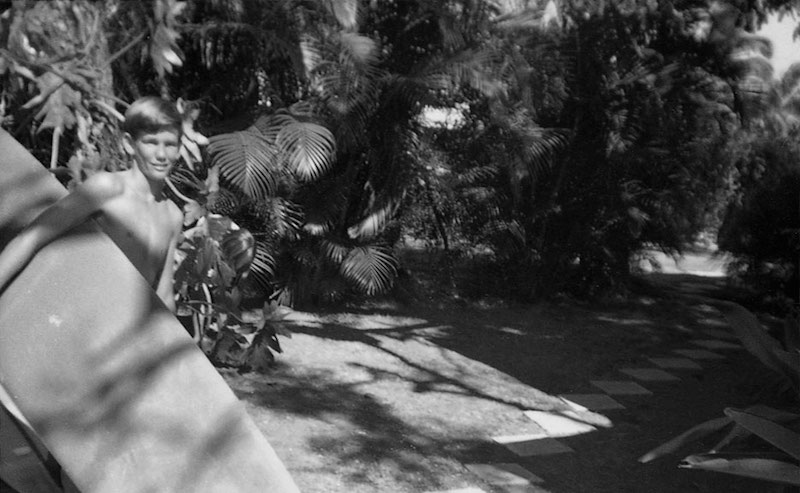The Photographs of William Finnegan’s Barbarian Days
Ross Gale
 William Finnegan’s surfing memoir Barbarian Days: A Surfing Life features multiple, small, black and white photographs between chapters. The author as a young boy in his parent’s backyard in Hawaii. Surfing Waikiki as a teenager. Surfing a famous Fijian break as a man. A girlfriend. Surf friends. They’re interesting photographs for their sparsity, darkness, and lack of clarity. Like the photograph of the Fijian island, a dark outcrop of trees in the middle of dark water, the photographs hardly tantalize. They aren’t meant to. The only reason I bring them up is because modern surfing and stories about modern surfing are mainly image based. Surf magazines are all about the pictures. The big airs, the size of the waves, the colors, the impossible places men and women put themselves in the ocean. The articles are equivalent to those in Playboy: they go unread. Finnegan places himself among the few surf writers whose surf literature is so colorful and abiding that images aren’t needed. The black and white souvenirs are appropriate.
William Finnegan’s surfing memoir Barbarian Days: A Surfing Life features multiple, small, black and white photographs between chapters. The author as a young boy in his parent’s backyard in Hawaii. Surfing Waikiki as a teenager. Surfing a famous Fijian break as a man. A girlfriend. Surf friends. They’re interesting photographs for their sparsity, darkness, and lack of clarity. Like the photograph of the Fijian island, a dark outcrop of trees in the middle of dark water, the photographs hardly tantalize. They aren’t meant to. The only reason I bring them up is because modern surfing and stories about modern surfing are mainly image based. Surf magazines are all about the pictures. The big airs, the size of the waves, the colors, the impossible places men and women put themselves in the ocean. The articles are equivalent to those in Playboy: they go unread. Finnegan places himself among the few surf writers whose surf literature is so colorful and abiding that images aren’t needed. The black and white souvenirs are appropriate.
“Surfing is a secret garden, not easily entered. My memory of learning a spot, of coming to know and understand a wave, is usually inseparable from the friend with whom I tried to climb its walls,” he writes.
Pictures play a large part in the author’s surf communities. More than once, slideshow events are held among friends where they laugh and banter and show off past feats. One such slideshow features the end of Finnegan’s scarier surf outing, where he and a friend barely make it back to shore alive. The last picture in the slideshow is of the two men sitting on the edge of the seawall moments after arriving safely to shore. Finnegan uses the photographs he mentions as reminders for himself, little moments he forgets, or ways to transition between his descriptions of his surf friends. These aren’t the photographs between the chapters. They’re stories of photographs that leave a lasting impression.
His friend says about the slideshow photograph, “I was going to put my arm around your shoulder, but, you know.” The truth is we don’t know. Only Finnegan and his friend do.
“Nearly all of what happens in the water is ineffable—language is no help.”
It isn’t that surfing is so insular and inaccessible that we can’t know. It’s that fear and the possibility of dying is so omnipresent in Barbarian Days it’s difficult to really, truly know. He takes us as close as possible to an exciting and beautiful life of surf travel. But that’s only possible because of the story’s characters. It’s what’s left unsaid between Finnegan and his friend that haunts Barbarian Days. We can’t replicate that in a glossy magazine spread. It’s what we can only experience in story, sitting near death’s edge with a friend, staring into mystery.